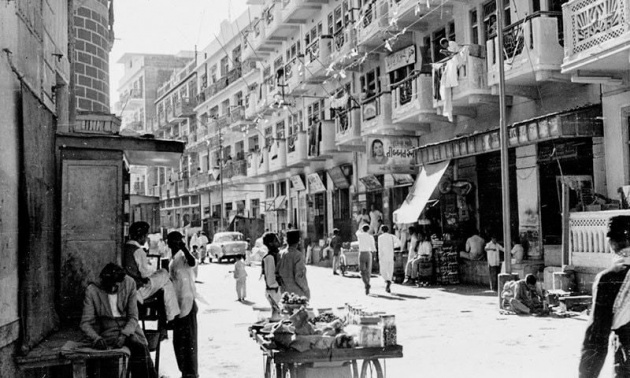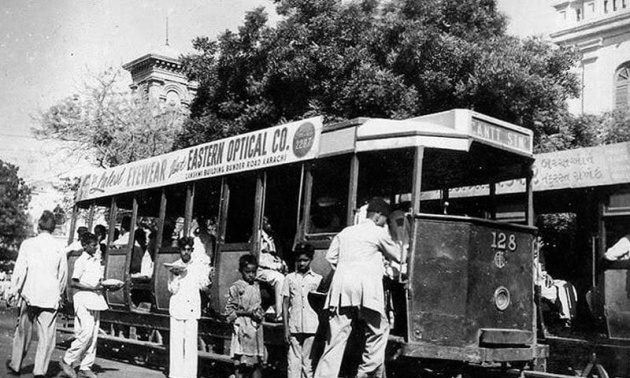On August 15, 1947, I was on Rhodesia Pitch along with other 16-year-old boys of St Peters High School, Panchgani, a hill station tucked away in the verdant wilderness of the Western Ghats, 64 miles from Poona.
We had gathered to celebrate the independence of India from the British, to witness the lowering of the Union Jack and the hoisting of the Tricolour. None of us really knew what it was all about.
What was uppermost in our minds was which of the four boarding schools would win the forthcoming quadrangular cricket tournament; and we were anxious to get back to practice.
As a sapling was being planted, we all sang Vande Mataram Jai Hind Jai Hind Jai Hind in a lusty voice which must have echoed across the valley.
Ma Hoyle, the Anglo-Indian matron had specially prepared samosas and halwa puri for the occasion which, for us hungry schoolboys, was the best part of the programme — it was like manna from heaven.
Four months later, an uncle in Bombay put me and my younger brother on a Dakota at Santa Cruz airport. Two hours later the airplane touched down at Karachi airport. My parents who had migrated from Bhopal to Karachi at the end of August straight from Bhopal State came to receive us.
We lived in an upstairs flat in a building called Jeevat Ashram near the old numaish and close to Haider Manzil, the residence of the Sindhi leader G.M. Syed.
1951 — commuters board a tram. —Photos: courtesy Nadeem F. Paracha
I have memories of my mother having a difficult time taking a nap in the afternoon because a vendor down the road who used to sell salted peanuts and dried bhuttas used to advertise his wares in a shrill falsetto at the top of his voice.
I went up to him and said that ever since his arrival, the hen in the maths teacher’s house has stopped laying eggs and Sub-Inspector Almeida lost control of his motorbike and crashed into an ice cream van. Next day, the vendor disappeared.
We lived close to the residence of the Mirza family who traced their origin to Georgia in the Soviet Union. The head of the family was Farhad Mirza, a jovial, friendly and hospitable citizen in the old Sindi tradition.
He had one daughter and two sons whose nicknames were Minky, Jhang and Perry. The two brothers were accomplished pianists. Perry, in fact, went to Germany on a scholarship to study classical music.
He stayed on, became a composer and taught in one of the universities. One day while Jhang was playing at my request a nocturne by Chopin a skinny black pariah walked into the lounge and sat on the carpet, his head cocked to one side. That’s how Peter Ilich Tchaikovsky became a part of the Mirza household.
Uncle Farhad had a number of brothers each of whom played a musical instrument. A classical concert in the Mirza household was always a treat.
Unlike Bombay, Karachi had a very small population, less than 300,000 people. There were Hindus and some Sikhs who had decided not to cross over. Also Parsis and Anglo-Indians and a sizeable Goan community that had their own club where they put on Gilbert and Sullivan Savoy operas at regular intervals and on weekends held dances.
All religious communities had their places of worship. There was also a fire temple for the Parsis and a synagogue for the few Jews who read the Torah on Saturdays. Karachi was a secular city, like Bombay. All Muslim, Hindu and Christian holidays were observed.
Saddar area. —Photos: courtesy Nadeem F. Paracha
Karachi, in December 1947, was a relatively quiet and peaceful place in which people of various religions had been living in harmony for years and years.
A number of educated and more affluent Muslims from the United Provinces, Delhi and Hyderabad Deccan had already decided to move to the new country and brought with them the Urdu language, while the business community that had migrated from Maharashtra, Gujarat, Kathiawar and Cutch conversed with one another mainly in Gujrati, Memoni or Cutchi which became the private language of commerce.
Also read: Rediscovering Karachi's crumbling heritage with an Iranian wayfarer
There were gentlemen’s watering holes like the Sind Club, the Gymkhana and the Boat Club. And there was also a restaurant in the Central Hotel on the first floor which doubled as a nightclub. It was called The Casino and was managed by a white Russian émigré named Arty who became something of an icon.
I wasn’t old enough to be allowed to enter the place but my height and a false stuck-on moustache allowed my parents to smuggle me in. The choicest music from the Golden Age of Europe and South America was provided by Stefan Eros and his Hungarian Serenaders.

 A local band playing at a nightclub in 1968 —Photos: courtesy Nadeem F. Paracha
A local band playing at a nightclub in 1968 —Photos: courtesy Nadeem F. Paracha
On weekends revellers were too inebriated with the distilled essence of grain or the fermented juice of the grape to notice either the music or the food, and it was extremely rare for the night to pass without a brawl taking place.
Tables and chairs were overturned, glasses were smashed and at least 12 guests were offered the hospitality of the local police station.
There was also striptease for men with jaded appetites, and the ones with a taste for fading continental blondes flocked to two oft frequented sweat shops in the city.
Very few cars could be seen on the roads and people travelled either by bicycle, or the four-wheel gharry. On Wednesdays and Sundays gamblers flocked to the race course clutching tips they had been given by the trainer or jockey or owner or the hawker who sold them the racing calendar for eight annas.



